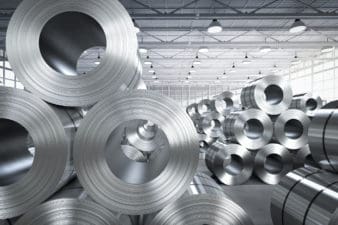The collapse in commodities has sharply impacted Canada’s economy and the energy patch. Not only are a number of energy companies struggling to survive, but mining companies are also battling to remain profitable. This has wreaked havoc on many portfolios as a number of mining stocks are down by a third or even more over the last year.
There are now signs that there is further pain ahead because many commodities, such as steel-making coal and base metals, are expected to fall even further.
Now what?
The primary driver of the commodities collapse is a growing global supply glut for a range of commodities including crude, iron ore, steel-making coal as well as thermal coal and copper. It has come about because of declining demand for raw materials and an oversupply of many commodities.
Despite the fact that many pundits expected China’s insatiable demand for raw materials to never end, there has been a sharp drop off in China’s economic growth. For the third quarter 2015 China’s annual GDP growth rate slipped to under 7%, the lowest it has been since the global financial crisis.
There are signs that it could fall even further. Construction activity remains in terminal decline, and industrial activity continues to be sluggish, contracting for the second consecutive month. Both of these sectors of China’s economy are among the largest users of steel, copper, and zinc.
This is not good news for steel-making coal or base metals miners such as Teck Resources Ltd. (TSX:TCK.B)(NYSE:TCK), First Quantum Minerals Ltd. (TSX:FM), and HudBay Minerals Inc. (TSX:HBM)(NYSE:HBM).
On the supply side, a number of other miners are focused on boosting output in order to boost economies of scale and compensate for lower commodity prices.
This bodes poorly for Teck, which, for the third quarter 2015, obtained a third of its revenue from steel-making coal when it was selling for an average price of US$88 per tonne. Since then, it has dropped to US$85 per tonne, and there are signs that it could fall to as low as US$70 per tonne between now and mid-2016, particularly as the outlook for China’s steel-making industry continues to deteriorate.
The outlook for copper is also poor; not only is demand declining, but the global supply surplus continues to grow.
A number of copper miners have boosted their output over the last year, and Chile’s government has recently injected US$600 million into state-owned copper miner Codelco to finance its investment plans. This is because copper is an important driver of economic growth in Chile, and Codelco remains focused on boosting output to compensate for lower copper prices.
As a result, analysts are expecting that the global supply glut for copper could become as high as 400,000 tonnes, placing even further pressure on copper prices.
This is a double whammy for Teck, which derives about 27% of its revenue from copper. It’s even worse for First Quantum and HudBay because both are heavily reliant on copper as the primary source of their revenues.
So what?
It is an ugly scene in the commodities space as a deteriorating outlook for China weighs heavily on prices. The indicators are that this can only worsen, with growing supplies and deteriorating demand set to push prices even lower. We could now be witnessing the “new normal” of miners offering little to no upside, despite their share prices having slumped between 35% and 56% over the last year, making Teck, First Quantum and HudBay unappealing investments.





